As I approach the end of my exchange trip and reminisce about all the adventures I had and things I saw, I wonder: what was with all the flowers?
Just a few of the many flowers you're likely to see here. | | No matter the location or season here in Japan, you can bet you will always see flowers. During my stay, I've seen them everywhere from gardens, parks and temples, to clothes, artwork and advertising. They're even common decoration on food! So it pretty much goes without saying that flowers are very loved here in Japan. But why exactly is that? Well if I had to guess, I would say it's because of Japan's unique appreciation of nature. As I mentioned in my earlier post on Japanese conservation, people in Japan appreciate nature for mostly aesthetic reasons. If we were to compile a list of things in nature Japan loves, flowers would be somewhere at the top of that list. This is because flowers are not only beautiful to the country, but highly symbolic. They not only represent beauty, but impermanence. Happiness and sadness. Life and death. When flowers bloom, it is intense beauty,but this vibrance is short lived. Since the Heian period (794-1185) this has been observed through flower viewing (花見/hanami) and reflected on in poetry and artwork. People started to take this symbolism to heart and some-like the samurai- sought to live their lives in the same manner as a flower; short, but beautiful and intense. It may be because of this that Japan has grown so fond of flowering plants. A Floral Calendar  Apart from the aesthetic and philosophical appeal of flowers, they're also a great way to get a sense of seasonal changes in Japan. I've been told there's a flower to represent each month here. The only time the focus shifts away from flowers is during fall (particularly October and November) when the public marvels at the crimson display of maple leaves (better known as 紅葉/momiji here).
Japan guide has a good visual guide to the general blooming periods of Japan's most loved flowers here. If you'd like to see this floral calendar for yourself, there's no better way than to experience it yourself. Coming to understand Japan's love for flowers will not only help you better appreciate Japanese culture, but flowers as well. | Momiji; the honorary flower for the autumn months. |
There's more to understanding Japanese people besides language...
So, if you read my previous two blogs on wildlife in Japan, you already know that while Japan is teeming with unique biodiversity, many species are at risk or endangered. But you're probably wondering, what does Japan think of all this?
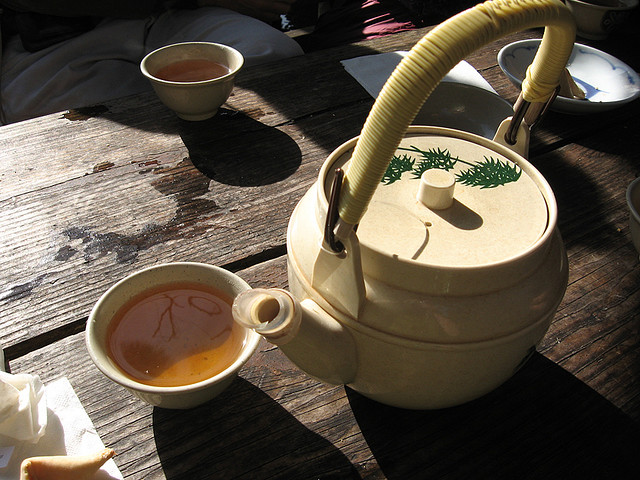 Pic Source: Flickr.com In my previous post on Japanese food ( Japanese food : The Link to culture), I mentioned how the food here says a lot about the culture. There are many foods that one may associate with Japan. But of all these dishes and drinks, none seem as integral to Japanese culture as tea.
There seems to be this big hype about tea these days. It is in fact currently the most commonly consumed beverage in the world. But Japan was into the stuff way before it was cool. This brilliant drink was introduced to the country centuries ago during the Nara period (710-794), around the same time Buddhism was sweeping the nation. Practicing monks drank tea as an alternative to alcohol, and would bring it with them during their travels. By the Edo period (1603-1867) tea was a common drink in every household of Japan. Now while Japan isn't the only country to fall in love with tea, they're probably one of the only ones to harbor an intense tea culture. Japan has practically perfected making tea here and even has a full blown ceremony for it (if you wanna know more about Japan's tea ceremony, I'd recommend checking out japanese-tea-ceremony.net). The high value placed on tea may have something to do with its deep ties to Zen Buddhist principles (simplicity, harmony etc.) but we'll never really know that for sure. What we do know is that tea is insanely popular here in Japan. It can be found almost anywhere, in many types, strengths and flavors, but the standard tea here is green tea. If someone in Japan offers you お茶 (ocha) without specifying the type, you can bet they're referring to green tea. If you're unsure of what tea to drink in Japan, tofugu has a fun post on it here. Tea gets a lot of praise or being a healthy alternative drink, but keep in mind this isn't the only reason people drink it. Japanese people seem to drink it for the taste. I say this because virtually everything has a 抹茶(maccha- powdered green tea) or お茶 (ocha-green tea) flavor option. Kit Kats, ice cream, gum, cookies, and even tic tacs have this option. Think of it like Japan's vanilla. When you take into account traditional Japanese food, ocha fits nicely into the nation's palate. It has a clean defined flavor without being too overbearing. This makes it perfect to couple with traditional foods that often have unique and/ or subtle flavors that may be easily overpowered or diluted by other beverages (save for water). The health benefits are a definite plus though... And those are just a few of the many facts about tea in Japan. So if you ever stop by for a visit, take my advice and grab a cup o tea. It's an easy and tasty way to break into Japan's food culture.
 Shinto Shrine on Miyajima Island Shinto Shrine on Miyajima Island When we talk about differences in cultures, religion is often toward the top of the list. It's often clear where these differences are as well as how influential the dominant religion is. But once we start to talk about Japan, the subject of religion becomes more complicated than it may first appear.
| On the one hand, we see a country nearly covered in shrines and temples. But, at the same time we see a population proclaiming to have no religious affiliations. A survey conducted in 2000 about religion in Japan found that only about 16% of people identify themselves as religious. This is especially strange when we consider that many national holidays are of either Shinto or Buddhist origins. So, what exactly is going on here? |  A survey about religion in Japan taken in 2000. Sample size was around 240 people. Source: japan-guide.com |
Here's to Japan's (not so) secret love affair with the English language.
Let's take a break from environmental issues for a bit and get back to the basics shall we? 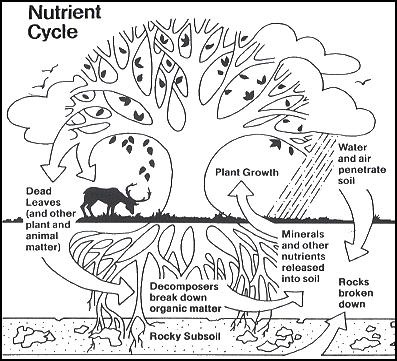 Source~USDA NRCS & NSTA (2010) Based off of the title, I'm sure you all know that I'm going to talk about the importance of nutrient cycling in ecosystems. But what exactly is nutrient cycling? Well, all jargon aside, nutrient cycling is the flow of energy in -and out of- an ecosystem. It may seem hard to believe, but our world only has a finite amount of resources. Think of it like a decorative fountain you see in a park. Water continually flows through the fountain, but that doesn't mean that the water is infinite in supply; it's simply being reused. Earth is a lot like that fountain, only on a much larger scale and with everything. Literally everything you see -from your clothes, your dog, your phone, your lawn, your hair, even the computer screen you're staring at now to read this blog- needed energy to be made a/o needs energy to survive or function. In order to maintain balance and keep everything running smoothly, nature's got a pretty good thing going: its called eating.
After reading about all this crazy awesome biodiversity I just have one question: where is it? I have visited a few parks and other places to enjoy nature, but I haven't really seen any of these endemic species I wrote about earlier. So I decided to some digging to find out where all this teeming biodiversity is hiding.
Before I talk about biodiversity in Japan, I'd like to talk a bit about biodiversity in general. Basically, Biodiversity is the variety of all living things (plants, animals, fungi etc.) in a given area. Our world has an insane amount of diversity. Think about all the plants and animals you see on a daily basis outside your home. Maybe you'll see 20, 50, a couple hundred? The Earth contains millions of species; and that's just what we've been able to find.
All this biodiversity isn't just aesthetic. All living things are connected in a great web of resources and feedback systems. An ecosystem is thought to be in a healthy state if its biodiversity level is high. This is because ecosystems with a greater variety of species tend to be more resilient; the more strings that support the system, the less likely it is to collapse after a disturbance occurs.
Biodiversity varies a lot depending on where you are. Some places are naturally overflowing with an immense amount of species. These "hotspots" for diversity can be found in lots of places from Australia, to Madagascar to Japan. Since I'm currently living in Japan, I think it's appropriate that I tell you what I learned about Japan's biodiversity.
This Saturday I got all decked out in my new yukata and headed out to Osaka with a few friends to experience Hanabi Matsuri (花火祭り). This is an annual festival usually held July-August, depending on the prefecture. These festivals are a staple in summer activities for those in Japan and to my knowledge, have been for a while. People generally go out in groups or as a couple and some will dress up in a yukata (a traditional summer dress/robe).
The festival was held on the river bank in Osaka (not too far from Umeda) and there was a HUGE amount of people. There was an array of food ranging from potato wedges, ramen, and even fresh cool pineapples. After we got something to eat and drink we found a spot that ended up having an awesome view of the fireworks (lucky us ^^). **Here's a video of the first five or so minutes of firework awesomeness ~(^-^)~
{ Sorry about the shaky camera o(_ _')o }
|



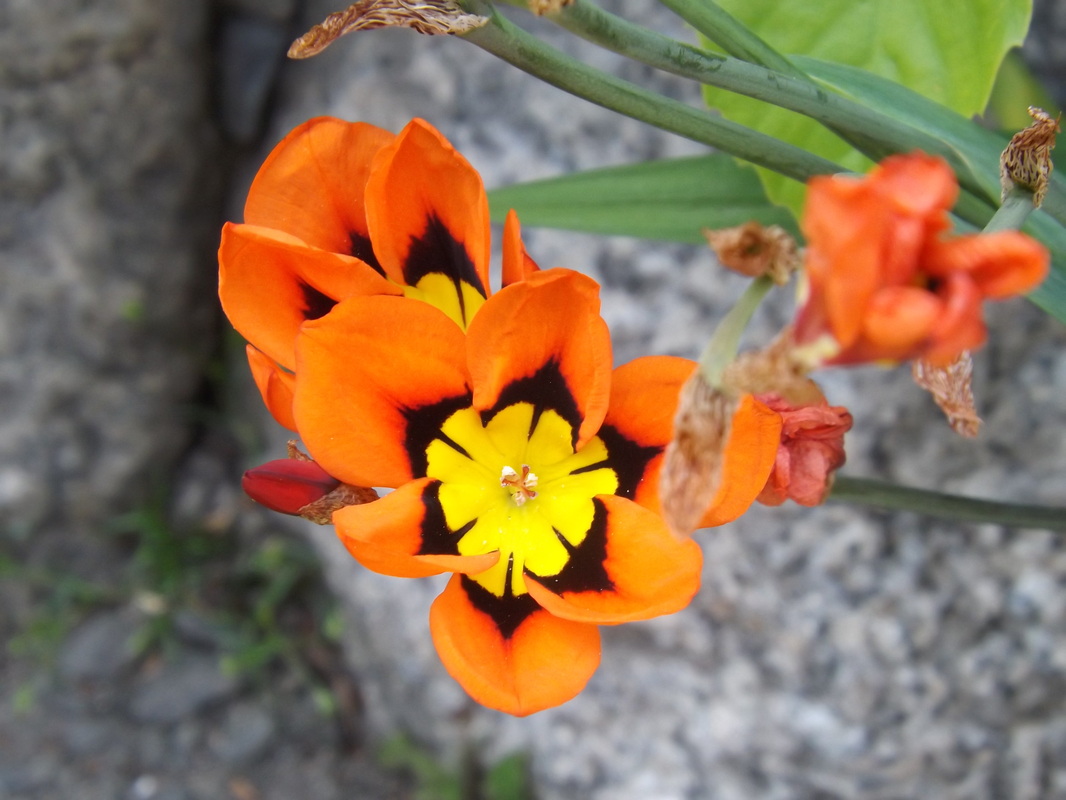








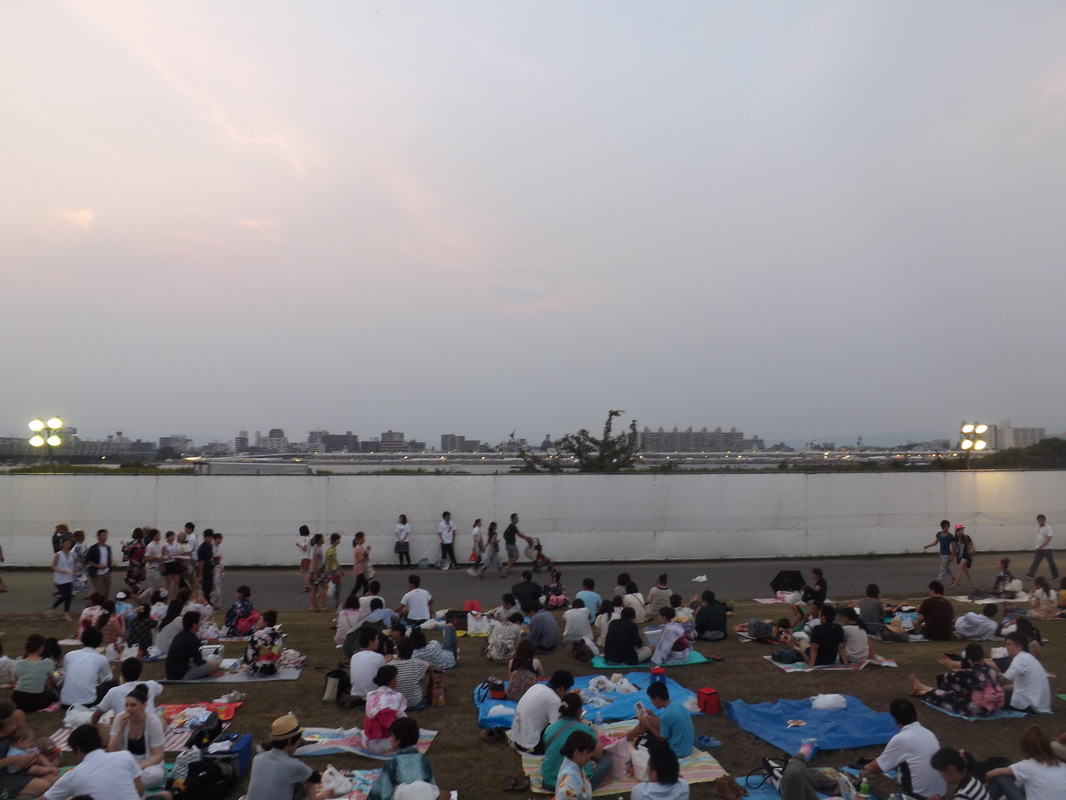
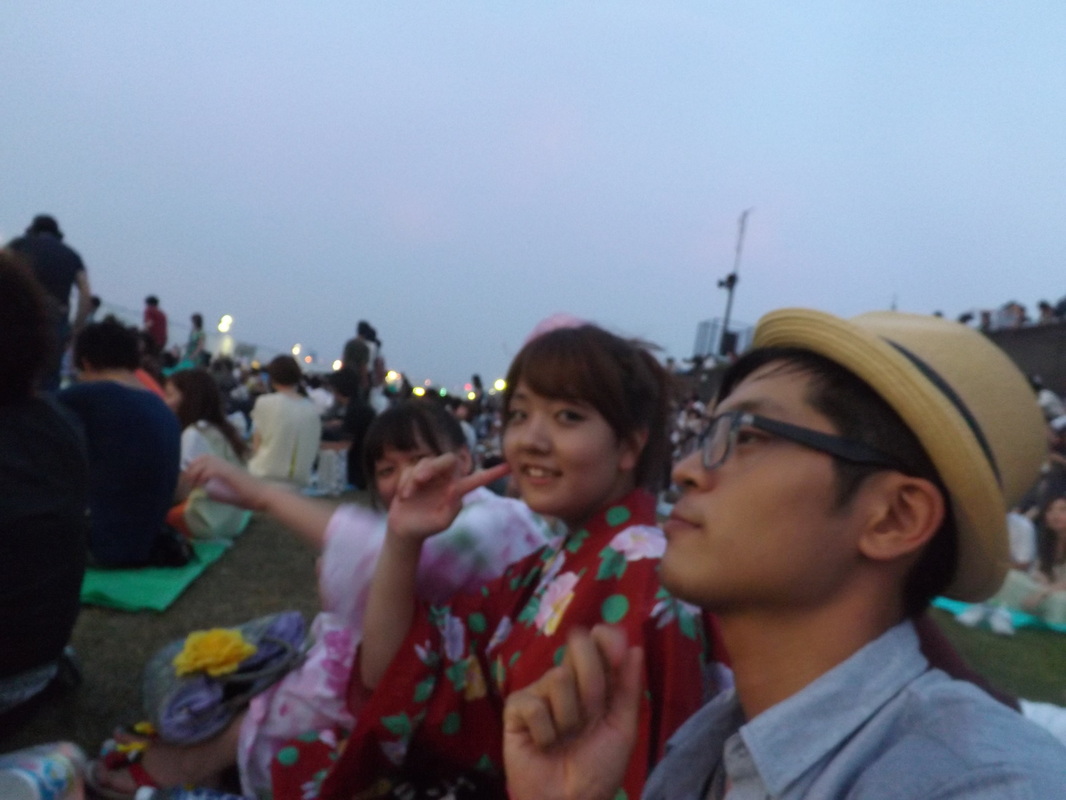
 RSS Feed
RSS Feed